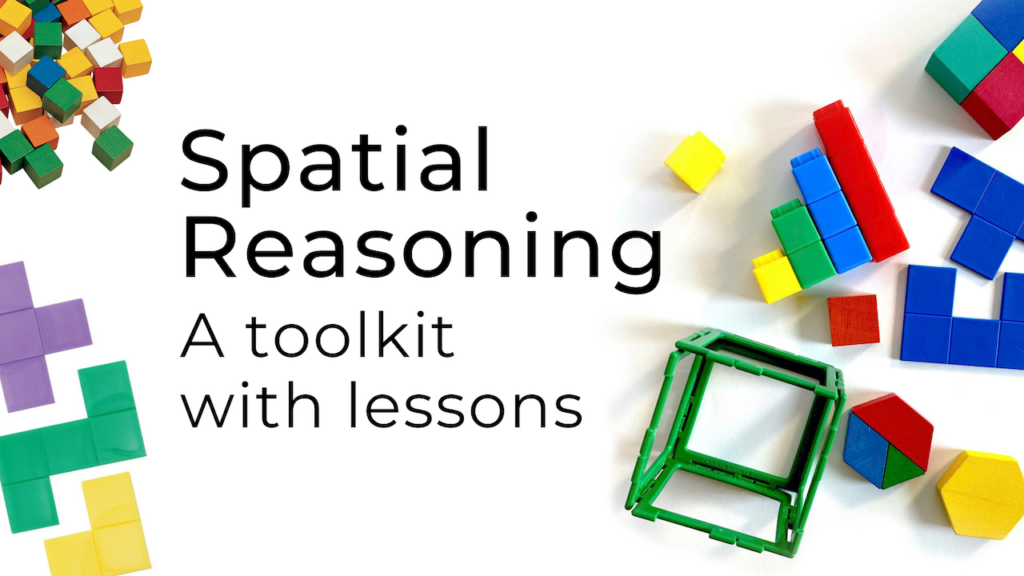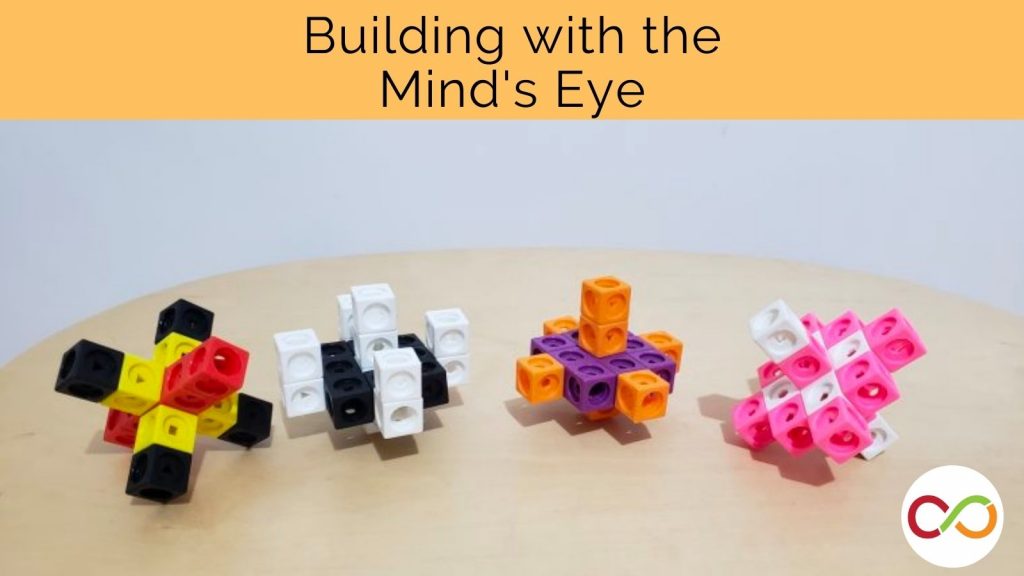Multilink Cube 3D Quick Image
Primary (Age 6 – 9)
Curriculum Goal
Primary: Geometry and Spatial Sense
- Compose and decompose various structures, and identify the two-dimensional shapes and three-dimensional objects that these structures contain.
- Identify congruent lengths, angles, and faces of three-dimensional objects by mentally and physically matching them, and determine if the objects are congruent.
Context
- This is a teacher led activity that can be conducted with a whole class or small groups.
Materials
- Computer and projector
- Multilink Cube 3D Quick Image PowerPoint (Appendix A)
- Multilink cubes (5 blue, 5 red, and 5 green per student)
Lesson
- Tell students you will be showing them an image of a structure and you want them to try and hold the image in their mind to recreate it.
- Flash one image from the Multilink Cube 3D Quick Image PPT (Appendix A) for five seconds, then hide the image.
- Invite students to use multilink cubes to recreate the image from memory.
- Depending on the complexity of the shape and the needs of the students, the image can be shown again to allow students to notice additional features while they build.
- After students are finished, show the image again. Students can compare the original structure to their own.
- Facilitate a discussion about students’ strategies for how they approached the task. Some questions to extend student thinking:
- Did you find it easy, medium or difficult to remember the shape? What made it that way?
- Does the shape resemble anything?
- How many multilink cubes in all were needed for this shape? Can you suggest a way to make it easier to count?
- Repeat with each image.
Look Fors
- What kind of spatial language are the students using amongst themselves and in group discussions?
- Are students closing their eyes to visualize the object?
- Are students gesturing in any way to maintain the object in their memory?
- Are students counting in any way to remember the orientation of the blocks?
Share this lesson
Share on facebook
Share on twitter
Share on email


